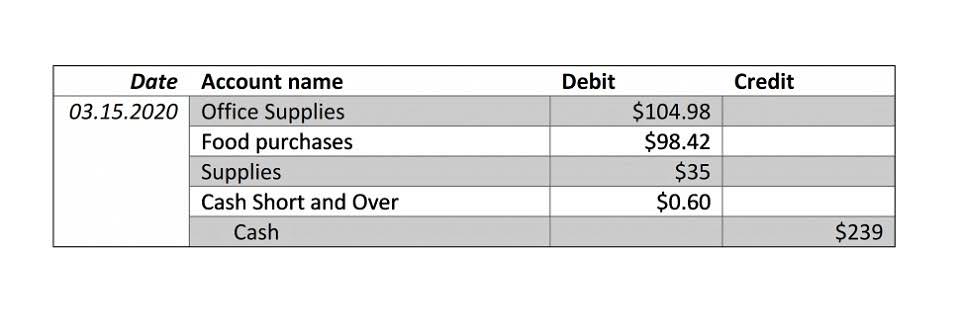
A contra account is an account https://www.bookstime.com/ with a balance opposite the normal accounts in its category. Contra accounts are usually linked to specific accounts on the balance sheet and are reported as subtractions from these accounts. In other words, contra accounts are used to reduce normal accounts on the balance sheet.
- To keep a finger on the pulse of your contra accounts, you might also consider dashboards and reporting tools that offer real-time insights into these critical financial metrics.
- The allowance method of accounting allows a company to estimate what amount is reasonable to book into the contra account.
- Contra Asset Account – A contra asset account is an asset that carries a credit balance and is used to decrease the balance of another asset on the balance.
- If a reduction or rebate occurs, a credit is made to the contra expense account, which offsets the original expense.
- Let’s consider a fictional example of a small retail business called “GadgetHub” to illustrate the use of a contra expense account in financial accounting.
- Inscrutable Corporation offers long-term disability insurance to its employees under an arrangement in which it pays for the insurance, and then participating employees reimburse it for half of this cost.
- Home Depot reports that returns are estimated at the time of the sale based on historic returns numbers.
Example #2: Asset Contra Account
This would allow the company to track the amount of money that has been borrowed. The contra liability account would be used to offset the liability account on the balance sheet. They are usually subcategory accounts linked to an account on the balance sheet. Contra accounts are used to offset each other and reduce the gross amount. For example, a contra accumulated depreciation account can offset a fixed asset.
List of common contra accounts

This also ensures accurate financial statements, which is essential for meeting regulatory requirements and maintaining the trust of stakeholders. By providing a clear and transparent mechanism to account for adjustments, these accounts enable stakeholders, including investors and creditors, to better understand a company’s financial health. Whereas assets normally have positive debit balances, contra assets, though still reported along with other assets, have an opposite type of natural balance. By using contra expense accounts, financial statement users can gain a more accurate and detailed understanding of the company’s expense structure, allowing for better financial analysis and decision-making. Companies often receive discounts from suppliers for early payment of invoices or bulk purchases. These discounts are recorded in a contra expense account, which offsets the original expense recorded for the purchase.

Debit or Credit
Let’s go over how they work and what the main types are, and then finish with an example. My Accounting Course is a world-class educational resource developed by experts to simplify accounting, finance, & investment how is sales tax calculated analysis topics, so students and professionals can learn and propel their careers. Contra accounts are a little tricky to think about when you are first starting out.
To avoid this loss of important data, we record actual cost and depreciation in separate ledger accounts. Below is the asset account debit balance and accumulated depreciation account credit balance on the balance sheet. A contra account plays a significant role in business contra expense accounts by providing a clearer, more detailed picture of the financial situation. They ensure that the assets, revenues, and equity reported are not overstated, and that liabilities are presented in relation to any discounts or premiums. This transparency helps in accurate reporting, better decision-making, and instills greater confidence among investors and stakeholders.

Example of Contra Accounts in Use
It is linked to specific accounts and is reported as reductions from these accounts. On the income statement, the net cost of goods sold will be reported as $98,000 ($100,000 – $2,000), reflecting the impact of the purchase discount. To record these transactions, GadgetHub will create a contra expense account called “Purchase Discounts.
- The difference between an asset’s account balance and the contra account balance is known as the book value.
- Maintaining contra revenue accounts empowers you to maintain healthier and more realistic expectations of financial outcomes—no rose-tinted glasses here.
- Below is the asset account debit balance and accumulated depreciation account credit balance on the balance sheet.
- The equity section of the balance sheet is where the shareholder’s claims to assets are reported.
- This contra entry involves only accounts receivable and accounts payable.
- There are four key types of contra accounts—contra asset, contra liability, contra equity, and contra revenue.
Contra asset examples like ‘Accumulated Depreciation’ reduce the value of fixed assets, showing their worth after usage over time. A liability that is recorded as a debit balance is used to decrease the balance of a liability. It is not classified as a liability since it does not represent a future obligation. A liability recorded as a debit balance is used to decrease the balance of a liability. A contra liability is an account in which activity is recorded as a debit balance and is used to decrease the balance of a liability.
- Understanding how contra expense accounts function is vital for anyone involved in financial management or analysis.
- In day-to-day bookkeeping, you’ll see contra accounts in play frequently.
- Examples of deferred unearned revenue include prepaid subscriptions, rent, insurance or professional service fees.
- Contra liabilities are common in companies that sell bonds to raise capital.
- This reduction can lead to a more favorable view of the company’s profitability, as it shows that the company is effectively managing its costs.
Examples of contra liabilities are Discounts on Bonds and Notes Payable and Short-Term Portion of Long-Term Debt. Contra expense accounts come in various forms, each serving a unique purpose in financial accounting. When a company returns goods to a supplier due to defects or other issues, the value of these returns is recorded in this account. This action reduces the total cost of goods purchased, ensuring that the expense reported on the financial statements reflects only the net cost of goods that were actually retained and used by the company. The mechanics of contra expense accounts involve debits and credits, similar to other accounts in double-entry bookkeeping.
Role in Financial Analysis

We are better off subtracting the accumulated depreciation account (the contra account) from PPE cost account (the parent account) to arrive at the net balance of the PPE. In finance, a contra liability account is one that is debited for the explicit purpose of offsetting a credit to another liability account. In other words, the contra liability account is used to adjust the book value of an asset or liability. Contra Liability Account – A contra liability account is a liability that carries a debit balance and decreases other liabilities on the balance sheet.
